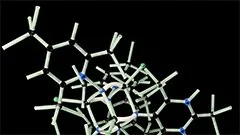Introduction
The encounter between antigens (Ag) that are not self (non-self Ag) and lymphocytes within secondary lymphoid organs is a fundamental process in the immune system's response to foreign pathogens. This course aims to provide an in-depth understanding of this critical interaction, focusing on the roles of antigens, lymphocytes, and secondary lymphoid organs in this process.
Antigens: Structure and Classification
Antigens are foreign molecules that elicit an immune response. They can be classified into two main types based on their structure:
Linear or conformational antigens: These are typically composed of long polypeptide chains folded into a specific three-dimensional structure, which is essential for their immunogenicity. Examples include bacterial toxins and viral envelope proteins.
Carbohydrate antigens: These are often found on the surface of cells and consist of complex sugars. They can be further subdivided into three categories:
- Simple sugars: Monosaccharides, such as glucose or fructose, are not typically immunogenic but may become so when linked to a protein or polysaccharide in a glycoprotein or glycolipid, respectively.
- Oligosaccharides: These are chains of two to ten simple sugars and can serve as antigens. Examples include blood group antigens on the surface of red blood cells.
- Polysaccharides: Longer chains of simple sugars, these may be found on bacterial cell walls or in certain viruses.
Lymphocytes: Types and Functions
Lymphocytes are a crucial component of the immune system, responsible for recognizing and responding to non-self Ags. There are two primary types of lymphocytes: B cells and T cells.
B Cells
B cells are responsible for producing antibodies (immunoglobulins) in response to non-self Ag. They mature and differentiate in the bone marrow before migrating to the secondary lymphoid organs, where they can encounter their specific Ag. Upon Ag recognition, B cells proliferate, differentiate into plasma cells, and secrete large amounts of antibodies to neutralize or eliminate the pathogen.
T Cells
T cells are responsible for cell-mediated immunity and can be further divided into two main subtypes: helper T cells (Th) and cytotoxic T cells (Tc). Both mature in the thymus before migrating to secondary lymphoid organs.
Helper T Cells
Helper T cells, also known as CD4+ T cells, play a crucial role in activating B cells and other immune cells. Upon Ag recognition, helper T cells secrete cytokines that stimulate the proliferation and differentiation of B cells and activate cytotoxic T cells.
Cytotoxic T Cells
Cytotoxic T cells, or CD8+ T cells, are responsible for directly killing infected cells. Upon Ag recognition, these cells release perforins and granzymes that induce apoptosis in the target cell.
Secondary Lymphoid Organs: Structure and Function
Secondary lymphoid organs are specialized tissues where lymphocytes interact with Ags and other immune cells to mount an effective response. The main secondary lymphoid organs include:
- Lymph nodes: Lymph nodes filter lymph fluid as it travels through the lymphatic system, trapping pathogens and presenting them to lymphocytes.
- Spleen: The spleen filters the blood and stores immune cells, acting as a reservoir for these cells during an immune response.
- Tonsils and adenoids: These are collections of lymphoid tissue located in the throat and nasopharynx, serving to filter incoming pathogens from the respiratory tract.
- Peyer's patches: Found in the small intestine, Peyer's patches serve as a critical site for the immune surveillance of the gut.
Antigen Presentation and Activation of Lymphocytes
The interaction between Ags and lymphocytes within secondary lymphoid organs occurs through antigen presentation. This process involves two main steps:
- Antigen processing: In this step, phagocytic cells, such as macrophages or dendritic cells, engulf pathogens or their components and break them down into peptides. These peptides are then bound by major histocompatibility complex (MHC) molecules and presented on the cell surface.
- Lymphocyte activation: Upon encountering an MHC-peptide complex that matches their specific Ag receptor, lymphocytes become activated and undergo proliferation, differentiation, and effector function. For B cells, this results in antibody production, while for T cells, it leads to cellular immunity through the release of cytokines or direct killing of infected cells.
Conclusion
The encounter between non-self Ags and lymphocytes within secondary lymphoid organs is a complex yet fundamental process in the immune system's response to pathogens. Understanding this interaction provides valuable insights into disease mechanisms and offers potential targets for therapeutic intervention.
MCQ: Test your knowledge!
Do you think you know everything about this course? Don't fall into the traps, train with MCQs! eBiologie has hundreds of questions to help you master this subject.
These courses might interest you
Create a free account to receive courses, MCQs, and advice to succeed in your studies!
eBiologie offers several eBooks containing MCQ series (5 booklets available free for each subscriber).




